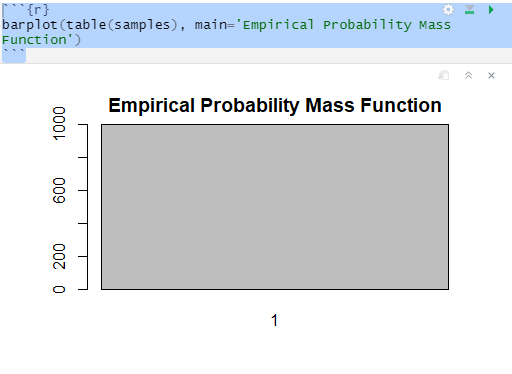Here's my R-code for an inversion sampler to generate a sample of 1000 random numbers from the distribution of X. Use the generated CNRG pseudo-random numbers (do not use any functions, which directly implement the sampler like rbinom()).
discrete.inv.transform.sample <- function( p.vec ) {
Xo<-2
a<-3
c<-5
m<-1000
X <- numeric(length = m)
X[1]<-Xo
for(i in 2:m){
X[i] <- (a*X[i-1]+c)%%m
}
U <- X/m
if(U <= p.vec[1]){
return(1)
}
for(state in 2:length(p.vec)) {
if(sum(p.vec[1:(state-1)]) < U && U <= sum(p.vec[1:state]) ) {
return(state)
}
}
}
I need to Show the probability mass function of the sample of simulated random numbers. Include the true probability mass function in the plot for a comparison.
num.samples <- 1000
p.vec <- c(0.1, 0.2, 0.4, 0.1,0.2)
names(p.vec) <- 1:5
samples <- numeric(length=num.samples)
for(i in seq_len(num.samples) ) {
samples[i] <- discrete.inv.transform.sample(p.vec)
}
barplot(p.vec, main='True Probability Mass Function')
but when I plot the empirical probability mass function, the graph only got X=1 show up,
barplot(table(samples), main='Empirical Probability Mass Function')

can someone please tell me how to fix the problem?
thank you